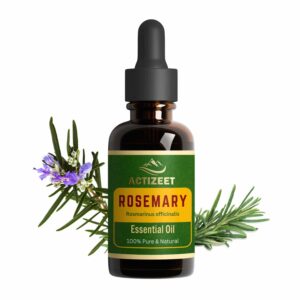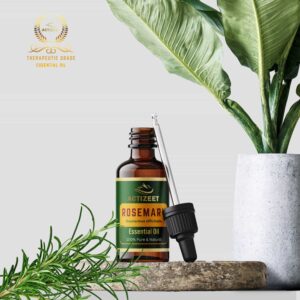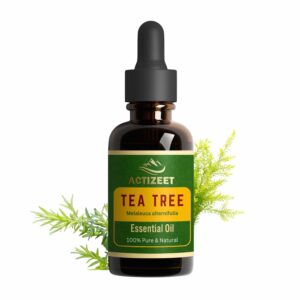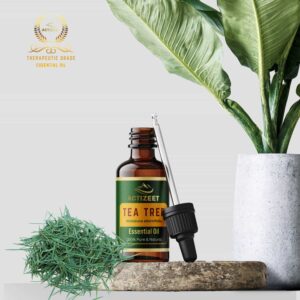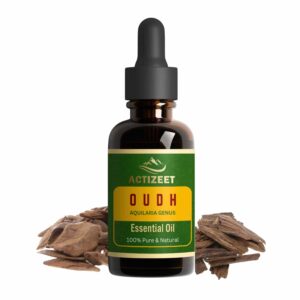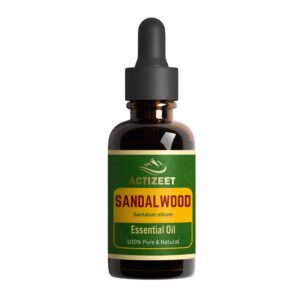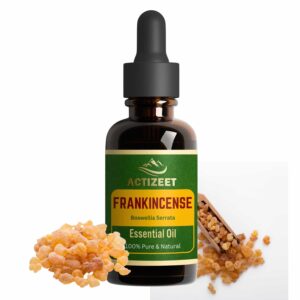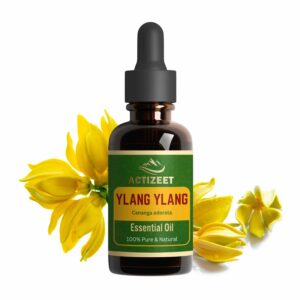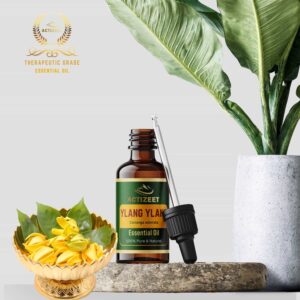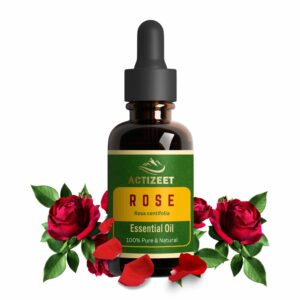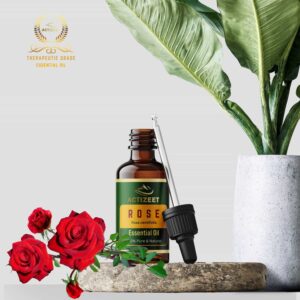Welcome to the aromatic world of essential oils! These natural extracts have gained immense popularity in recent years, thanks to their multifaceted benefits and captivating scents.
Derived from various plants and botanical sources, essential oils are highly concentrated liquids that capture the essence of their respective plants. Essential oils have been used for centuries in ancient healing practices and are now widely incorporated into modern lifestyles for their therapeutic properties.
From promoting relaxation and enhancing moods to aiding in skin care and boosting overall well-being, these tiny vials pack a powerful punch. Whether you’re a seasoned essential oil enthusiast or just dipping your toes into this fragrant realm, understanding how to use them properly is crucial.
Table of Contents
ToggleEssential Oils and Their Popularity
Essential oils are often referred to as nature’s miracle workers due to their vast array of uses. These volatile compounds are carefully extracted through processes such as steam distillation or cold pressing, capturing the plant’s aromatic molecules that possess unique therapeutic properties. This concentrated form allows us to enjoy the benefits of these plants at a much more potent level.
The popularity of essential oils can be attributed to their versatility in addressing various needs. Whether it’s using lavender oil for its calming effects, peppermint oil for headaches, or tea tree oil for its antibacterial properties, there seems to be an essential oil for almost every ailment or desired outcome.
Common Misconceptions about Mixing Essential Oils with Water
Despite the widespread use and love for essential oils, one common misconception revolves around mixing them with water. Many people believe that combining essential oils with water will create a homogeneous mixture where the oil disperses evenly within the liquid medium.
However, this is not entirely accurate. This misconception stems from the fact that water and oil have different chemical properties.
Essential oils are composed of volatile organic compounds, which are hydrophobic, meaning they repel water. On the other hand, water is a polar substance, making it hydrophilic and unable to mix seamlessly with oil without the help of appropriate emulsifiers or dispersing agents.
Understanding Essential Oils
The Essence of Essential Oils
Picture this: a field full of blooming flowers, their vibrant colours dancing in the gentle breeze. Imagine capturing the very essence of these flowers—the aromatic molecules that give them their unique scents and potential therapeutic benefits. That, my dear reader, is precisely what essential oils are—concentrated extracts derived from various plants, including flowers, leaves, bark, and even roots.
A Delicate Extraction Process
Extracting these precious oils is an art in itself. There are several methods employed to obtain them in their purest form.
The most common techniques include steam distillation and cold-press extraction. Steam distillation involves passing steam through plant material to release the volatile compounds that make up the essential oil.
It is then cooled and collected as a liquid mixture of oil and water. On the other hand, cold-press extraction primarily applies to citrus fruits like oranges or lemons.
The fruit’s peel is carefully punctured or mechanically pressed to release its fragrant oils without heating. This method preserves the delicate aroma and maintains the oil’s natural properties.
Concentrated Nature and Potency
One word that perfectly describes essential oils is “potent.” These tiny bottles pack a powerful punch due to their highly concentrated nature. To put it into perspective, it takes an incredible amount of plant material to produce just a few millilitres of essential oil. For instance, it takes around 220 pounds (100 kilograms) of lavender flowers to create one pound (0.45 kilograms) of lavender essential oil—that’s about 27 square meters filled with beautiful lavender blossoms!
This concentration makes every drop valuable and explains why these oils should be treated with respect. It’s important to remember that less is often more when it comes to working with essential oils.
Their potency means that even a small amount can have a significant impact, whether for aromatherapy, skincare, or cleaning purposes. So, be sure to familiarize yourself with appropriate dilution guidelines and best practices to ensure the safe and effective use of these incredible gifts from nature.
The Science Behind Mixing Essential Oils with Water
Chemistry involved in essential oils and water interactions
When it comes to mixing essential oils with water, understanding the underlying chemistry can shed some light on why it’s not as simple as just adding a few drops to a glass of water. Essential oils are highly concentrated plant extracts, packed with aromatic compounds that give them their unique scents and therapeutic properties.
These compounds are typically insoluble in water due to their chemical makeup. Essential oils primarily consist of volatile organic compounds, such as terpenes and phenols, which contribute to their fragrance and therapeutic effects.
These compounds tend to be hydrophobic, meaning they repel or don’t dissolve well in water. This hydrophobic nature arises from the non-polar nature of these volatile molecules, which lack a significant charge distribution that would allow them to interact favourably with polar water molecules.
The hydrophobic nature of essential oils and the hydrophilic nature of water
Water, on the other hand, is a polar molecule composed of two hydrogen atoms bonded to one oxygen atom. This polarity results in an unequal distribution of electrical charge within the molecule—oxygen being slightly negative while hydrogen atoms are slightly positive. As a result, water molecules have an affinity for each other due to electrostatic attractions between opposite charges (hydrogen bonding).
This property makes water a highly effective solvent for ionic or polar substances, but it makes it challenging for hydrophobic substances like essential oils to mix uniformly. The hydrophobic nature of essential oils and the hydrophilic characteristics of water create a challenge when trying to mix them together.
If you attempt to add undiluted essential oil directly into the water, you’ll notice that they tend to remain separate—forming small droplets or floating on the surface rather than dispersing evenly throughout. This lack of solubility is due to the immiscibility between the hydrophobic essential oil compounds and the polar water molecules.
Factors to Consider Before Mixing Essential Oils with Water
The Importance of Using Pure, Therapeutic-Grade Essential Oils
When it comes to using essential oils, quality and purity should be your top priorities. The market is flooded with various essential oil products, but not all of them are created equal.
It’s crucial to opt for pure, therapeutic-grade oils that are extracted from high-quality plant sources. Why?
Because these oils undergo stringent testing and adhere to strict production standards to ensure their potency and safety, Using low-quality or adulterated oils can not only diminish the desired effects but may also pose health risks.
Some synthetic or impure oils contain chemicals or contaminants that can irritate the skin or respiratory system when inhaled or applied topically. Additionally, these subpar oils may not mix well with water due to their impurities or inconsistent chemical compositions.
Dilution Guidelines for Proper Usage
Now that you understand the significance of using pure essential oils, let’s discuss another crucial factor: dilution guidelines. Essential oil concentrations are highly potent and concentrated by nature, which means they should never be used undiluted on the skin or in water.
Dilution helps prevent skin irritations, allergic reactions, and excessive exposure to potent compounds. Different essential oils have varying dilution ratios based on their potency and application purpose.
As a general rule of thumb, a safe starting point is a 2% dilution ratio when mixing essential oils with water. This means adding approximately 12 drops of essential oil per ounce (30ml) of water or carrier liquid like witch hazel or alcohol.
However, it’s important to note that some individuals may have heightened sensitivities to certain essential oils, even at lower dilutions. Therefore, it’s wise to perform a patch test on a small area of skin before using any new mixture extensively.
Methods for Mixing Essential Oils with Water
Creating Aromatic Sprays or Mists
One of the easiest and most popular ways to mix essential oils with water is by creating aromatic sprays or mists. These delightful concoctions not only add a pleasant scent to your surroundings but also provide potential therapeutic benefits.
To make your own DIY room spray, start by gathering a clean spray bottle, essential oils of your choice, and distilled water. Begin by adding water to the spray bottle, leaving some space at the top for essential oil additions.
Next, select your desired essential oil or a combination of oils that appeal to you. Drop a few drops of these lovely fragrances into the bottle and shake gently to mix them with the water.
Voila! Your aromatic spray is ready for use.
Tips for Choosing Suitable Carrier Liquids
Choosing an appropriate carrier liquid can enhance the dispersion of essential oils in water-based mixtures. While distilled water is commonly used as a base, there are other options worth considering. Alcohol, such as vodka or rubbing alcohol, can act as a natural preservative and help disperse the essential oil more evenly throughout the solution.
Witch hazel is another excellent carrier liquid known for its gentle properties and ability to blend well with both water and essential oils. When selecting a carrier liquid, it’s important to consider its compatibility with both the specific oil(s) chosen and personal preferences in terms of scent and texture.
Enhancing The Efficacy of Essential Oil-Water Mixtures
Emulsifiers as a Solution for Better Blending
If you’ve ever wondered how to achieve better blending between oil-based ingredients like essential oils and water-based liquids like distilled water, emulsifiers can be incredibly helpful. Emulsifiers are substances that allow immiscible substances, such as oil and water, to mix more effectively. When added to your essential oil-water mixture, emulsifiers help create a stable and uniform blend.
One common natural emulsifier is vegetable glycerin, which not only aids in blending but also provides additional moisturizing benefits. Liquid soap can also serve as an emulsifier since its composition enables it to bring oil and water together harmoniously.
Examples of Natural Emulsifiers
Natural emulsifiers like vegetable glycerin or liquid soap are readily available and easy to use in your essential oil-water mixtures. Vegetable glycerin, derived from plant oils such as coconut or palm, acts as a humectant, drawing moisture into the skin while assisting in the thorough dispersion of essential oils within the solution.
Similarly, liquid soap contains surfactants that aid in breaking down the surface tension between oil and water molecules. Opting for natural emulsifiers not only ensures better blending but also avoids potentially harmful additives often found in synthetic commercial products.
Safety Precautions
When mixing essential oils with water or any other carrier liquid, it’s crucial to consider safety precautions for optimal well-being. Some essential oils may cause skin irritation or sensitivities when used undiluted or in high concentrations.
It’s advisable to follow recommended dilution guidelines specific to each essential oil before adding them to your mixture. Additionally, perform a patch test on a small area of skin prior to prolonged use to check for any adverse reactions.
Furthermore, store your homemade mixtures in dark-coloured glass bottles away from direct sunlight as light exposure can degrade the quality and effectiveness of essential oils over time. Keep essential oil-water mixtures out of reach from children and pets since ingestion may be harmful.
Conclusion
Incorporating essential oils into your daily life by mixing them with water opens up a world of possibilities. From creating aromatic sprays to experimenting with emulsifiers, there are numerous ways to enjoy the benefits and delightful scents that essential oils have to offer.
By following safety precautions and considering suitable carrier liquids, you can confidently embark on your journey of crafting unique blends that uplift your senses while providing potential therapeutic effects. So, let your creativity flow, and embrace the harmonious fusion of essential oils and water in pursuit of a more serene and aromatic environment!
RECOMANDED PRODUCTS
-
Rated 4.72 out of 5
₹1,500.00Original price was: ₹1,500.00.₹1,200.00Current price is: ₹1,200.00. Incl. GST ADD TO CART Buy Now -
Rated 4.88 out of 5
₹1,500.00Original price was: ₹1,500.00.₹1,200.00Current price is: ₹1,200.00. Incl. GST ADD TO CART Buy Now -
Rated 4.63 out of 5
₹1,900.00Original price was: ₹1,900.00.₹1,450.00Current price is: ₹1,450.00. Incl. GST ADD TO CART Buy Now -
Rated 4.74 out of 5
₹1,500.00Original price was: ₹1,500.00.₹1,200.00Current price is: ₹1,200.00. Incl. GST ADD TO CART Buy Now -
Rated 4.72 out of 5
₹2,500.00Original price was: ₹2,500.00.₹1,950.00Current price is: ₹1,950.00. Incl. GST ADD TO CART Buy Now -
Rated 4.88 out of 5
₹1,500.00Original price was: ₹1,500.00.₹1,200.00Current price is: ₹1,200.00. Incl. GST ADD TO CART Buy Now -
Rated 4.80 out of 5
₹1,500.00Original price was: ₹1,500.00.₹1,200.00Current price is: ₹1,200.00. Incl. GST ADD TO CART Buy Now -
Rated 4.88 out of 5
₹1,500.00Original price was: ₹1,500.00.₹1,200.00Current price is: ₹1,200.00. Incl. GST ADD TO CART Buy Now
Related posts:
- Heal Cracked Heels: Best Essential Oils
- Revitalize Your Mehndi with Essential Oil: Discover the Benefits!
- Scabies Eggs Exposed: Discover Essential Oil’s Power
- Rejuvenate with Essential Oil: Transform Your Bathing Experience
- Unveiling the Art: How Essential Oil is Made
- Ultimate Guide: Ashwagandha Powder & Water Consumption Tips
- Can Shilajit be taken with water?
- Discover the Best Essential Oil for Skin Whitening


